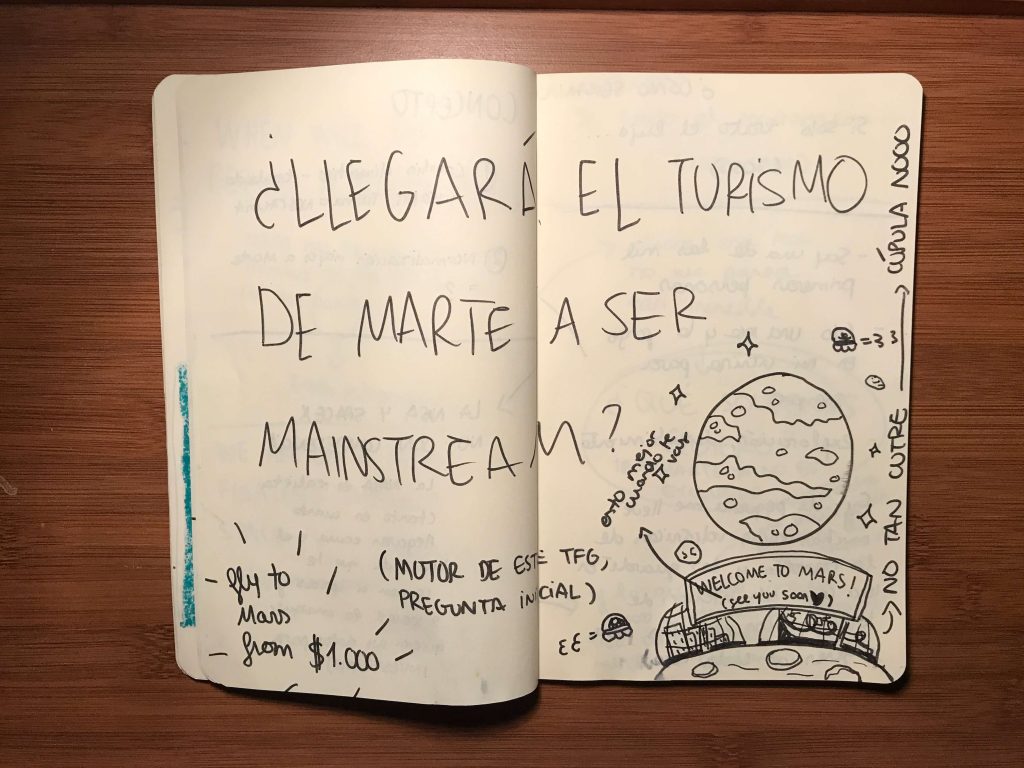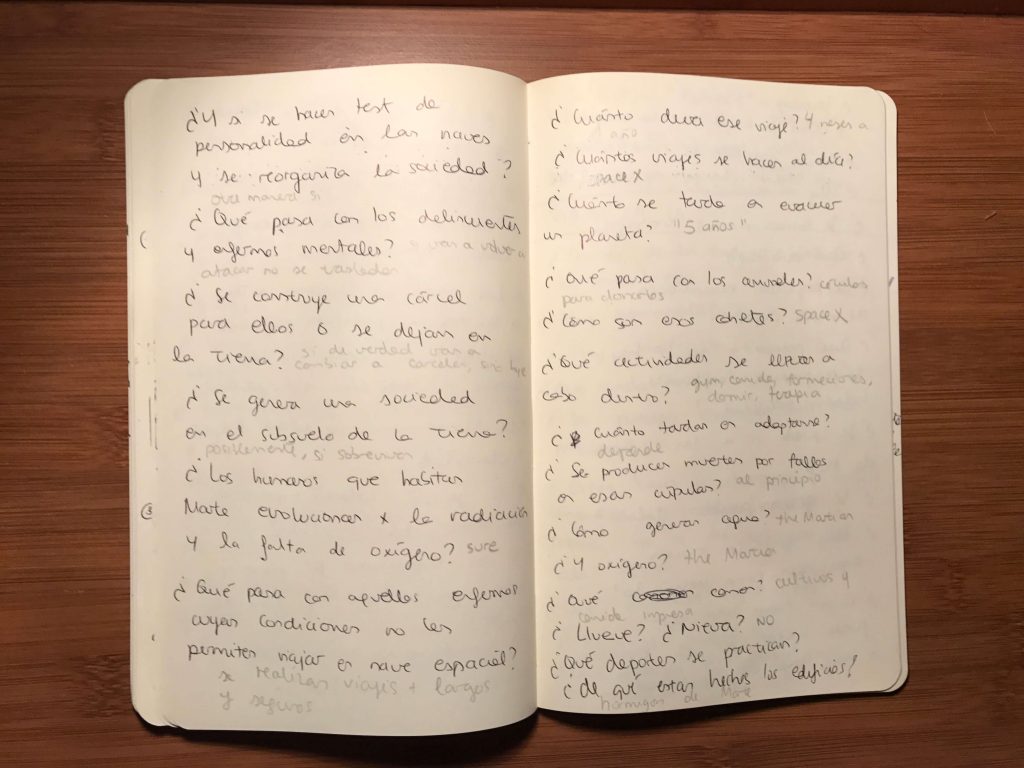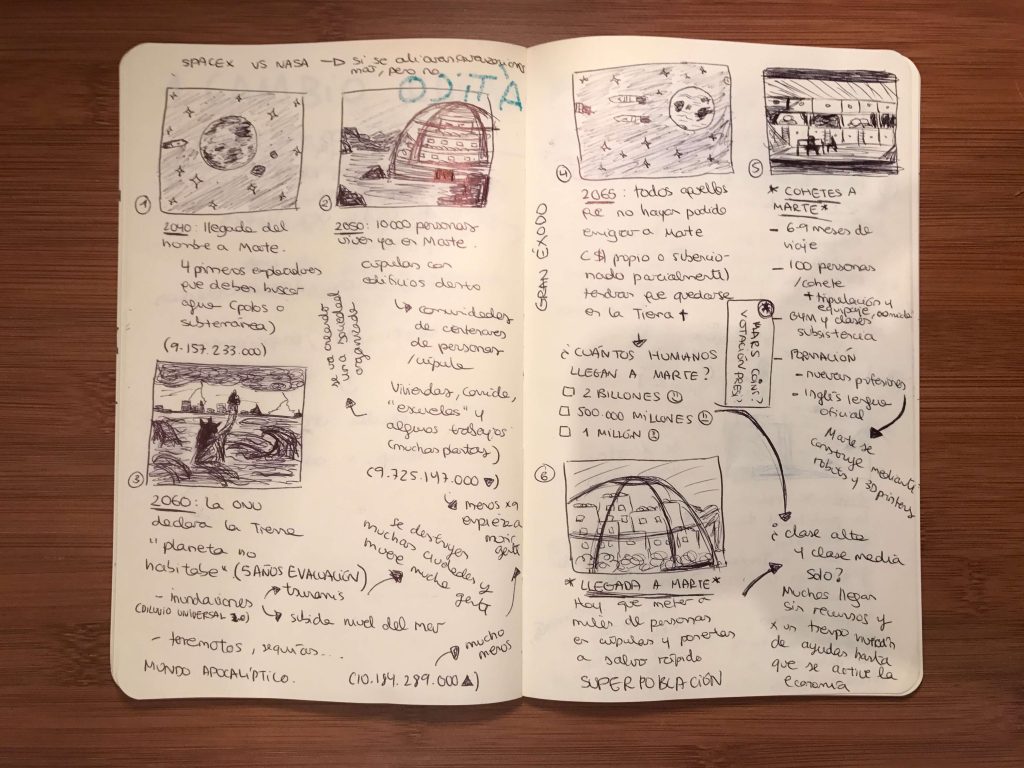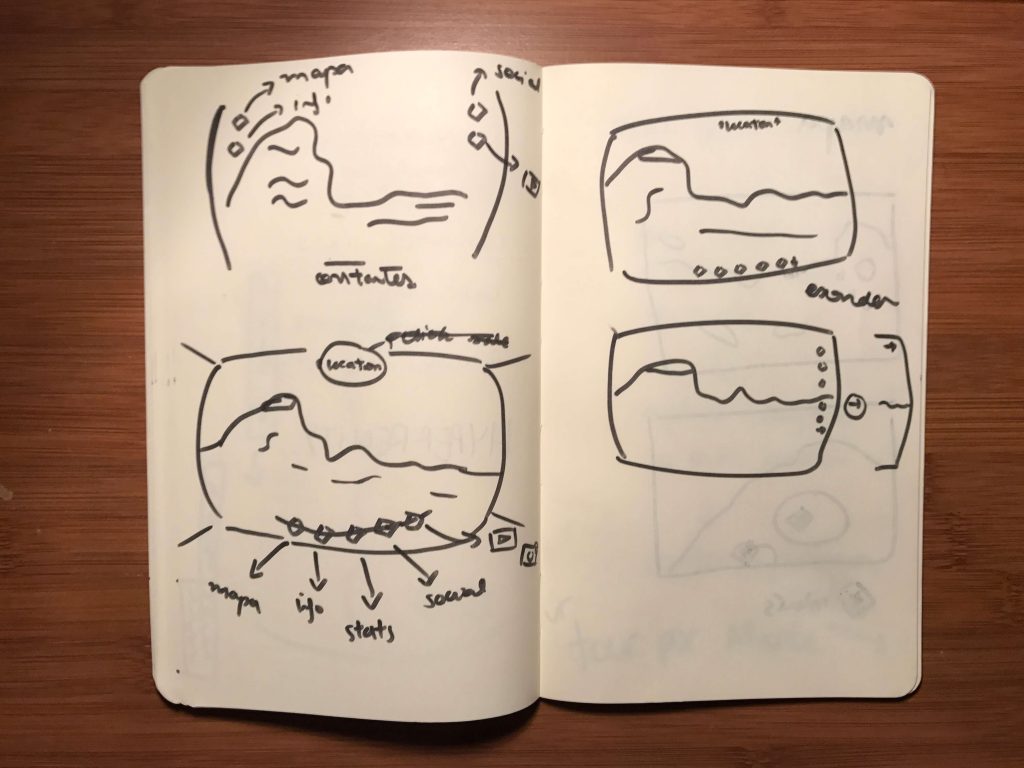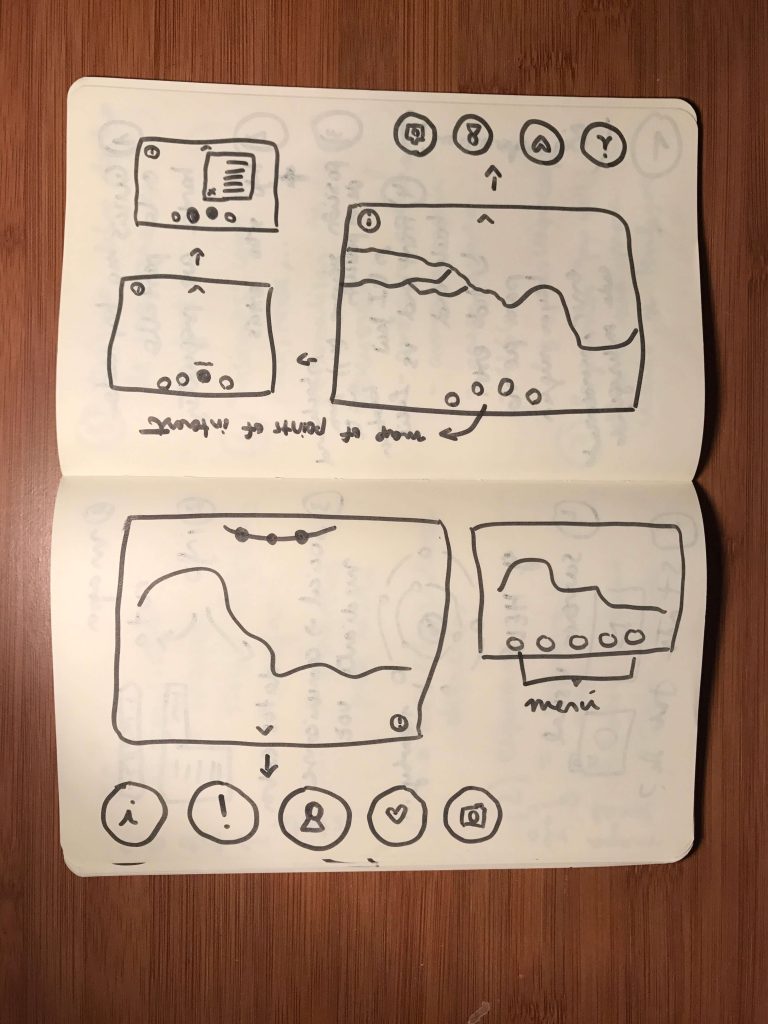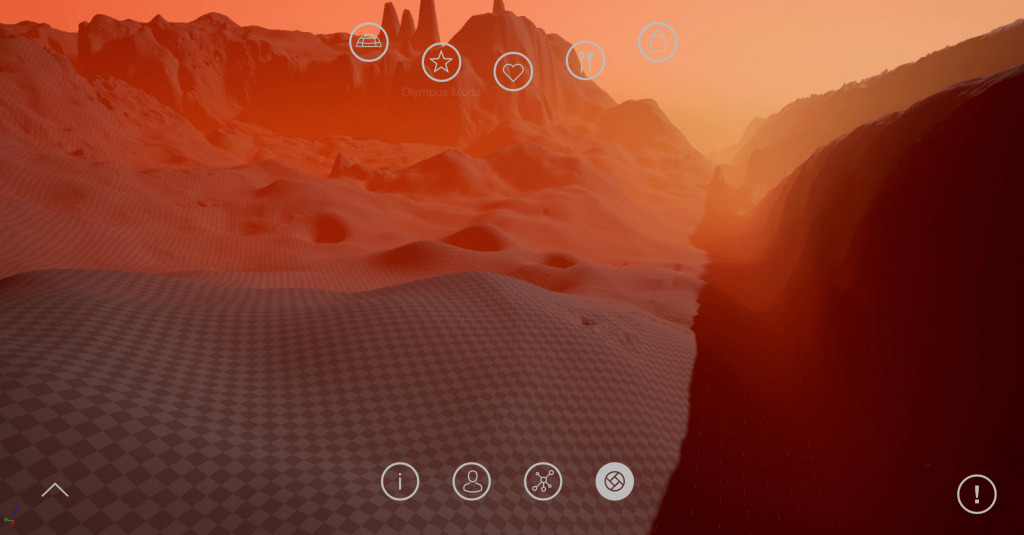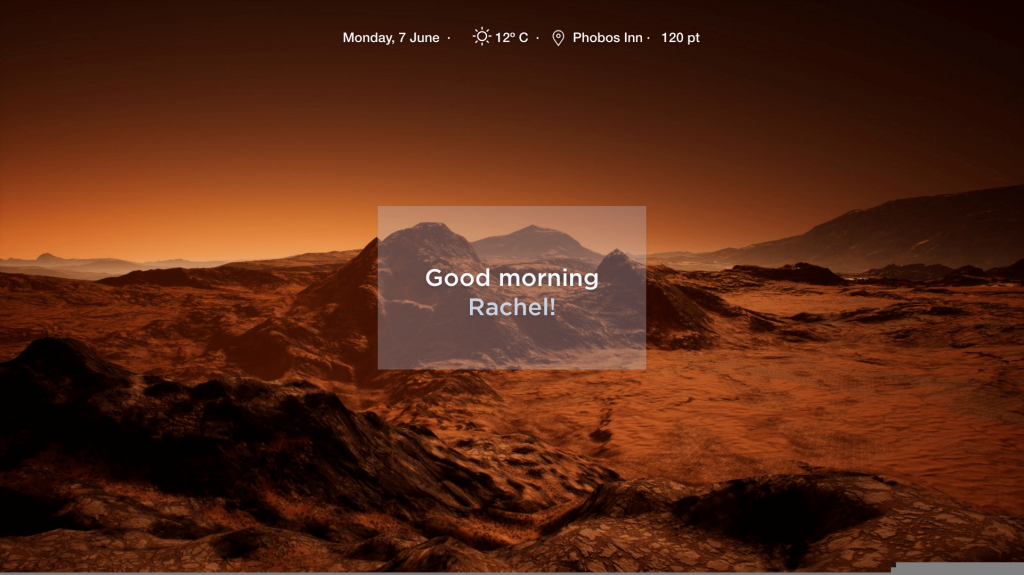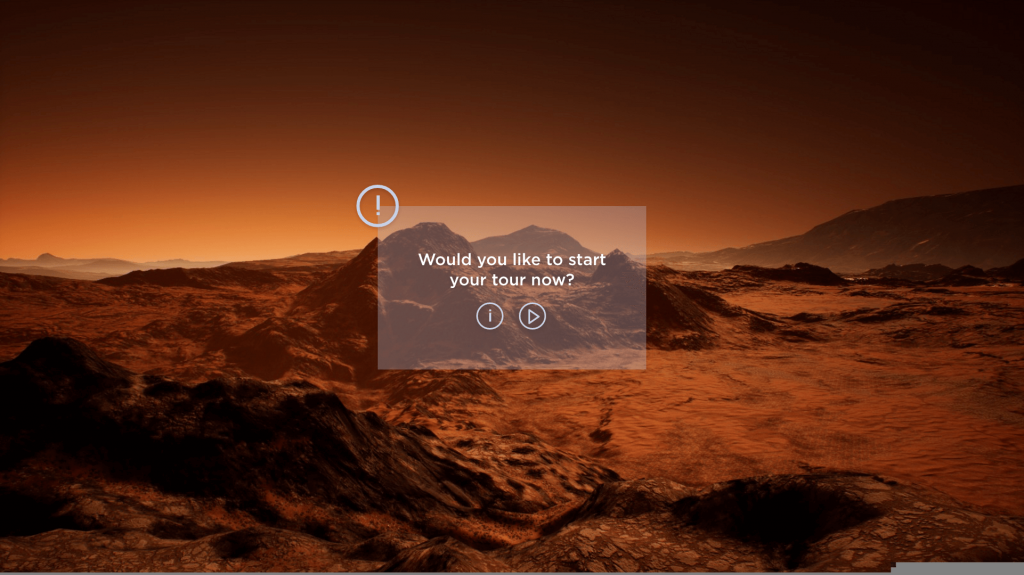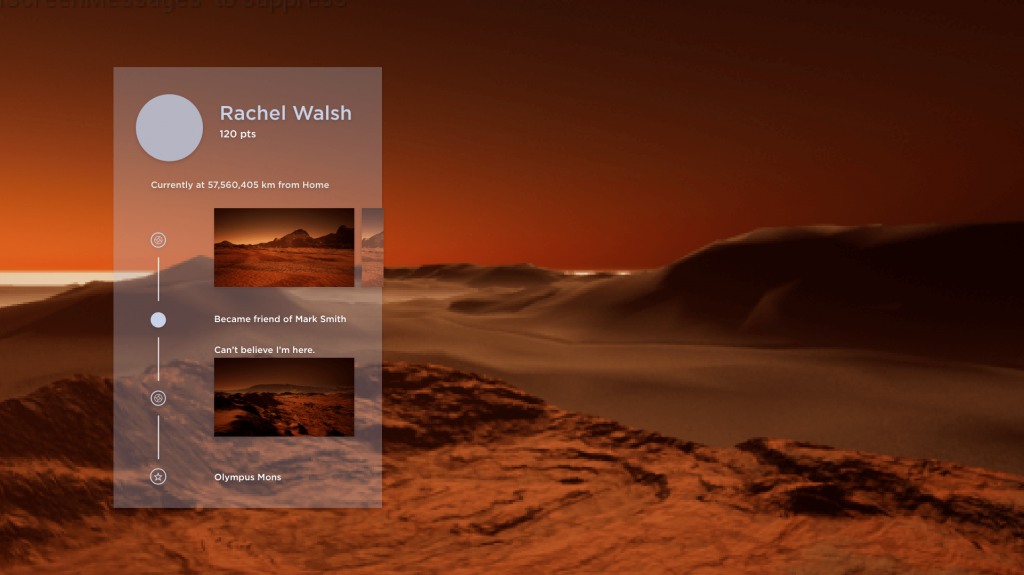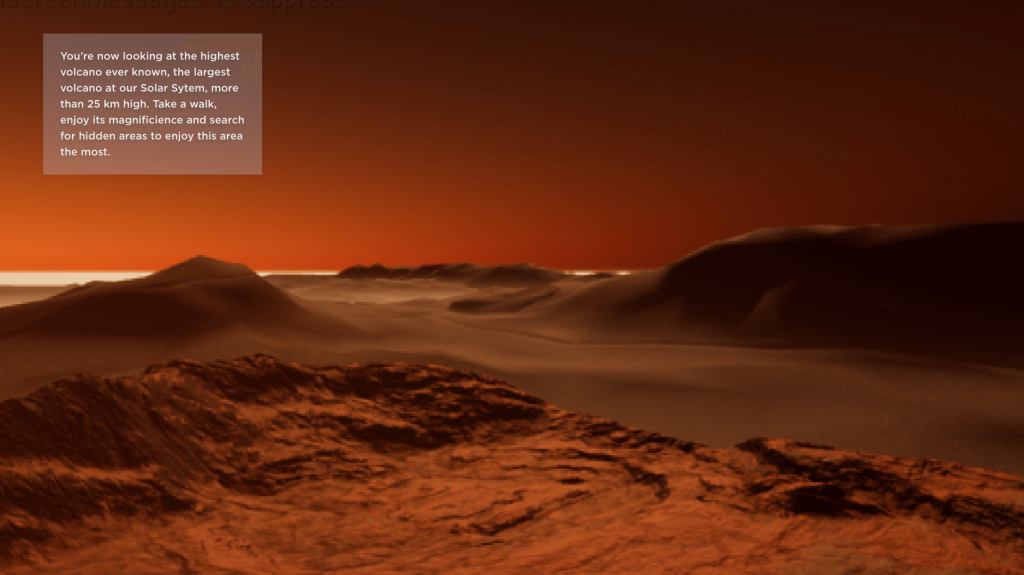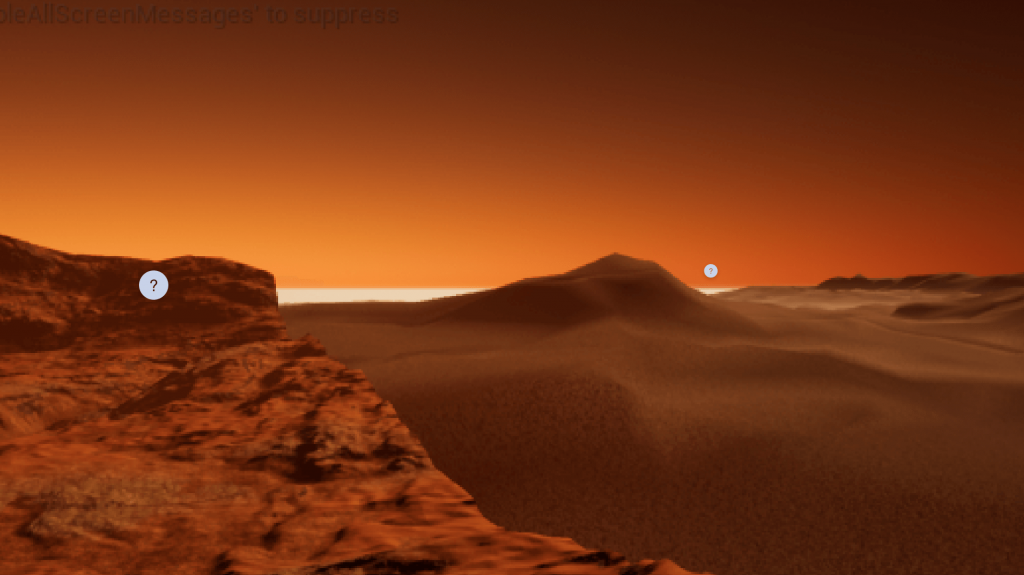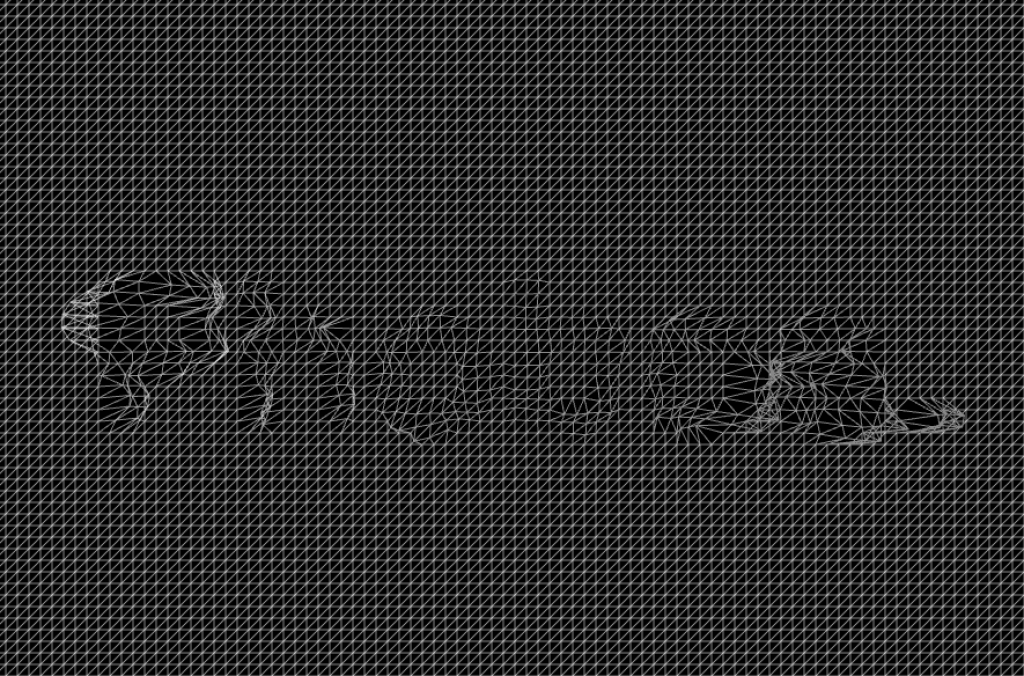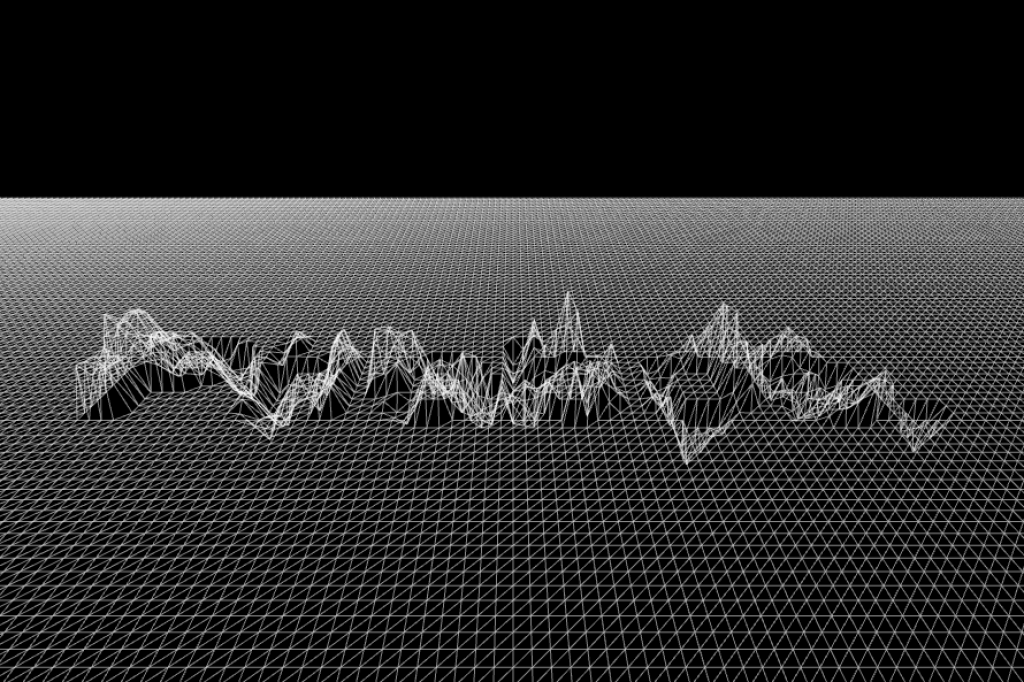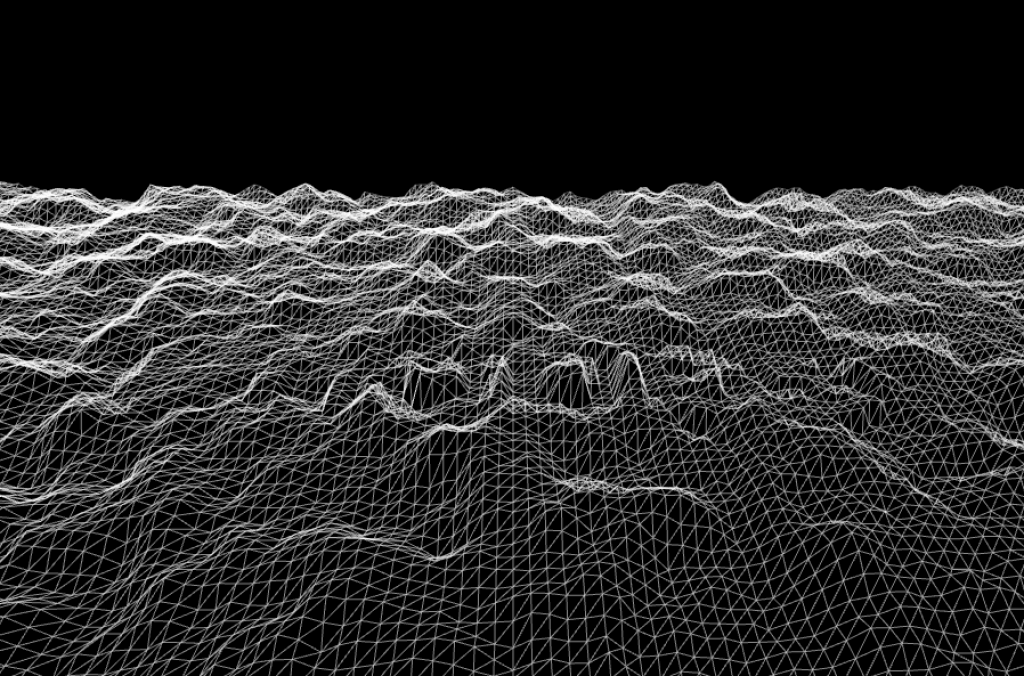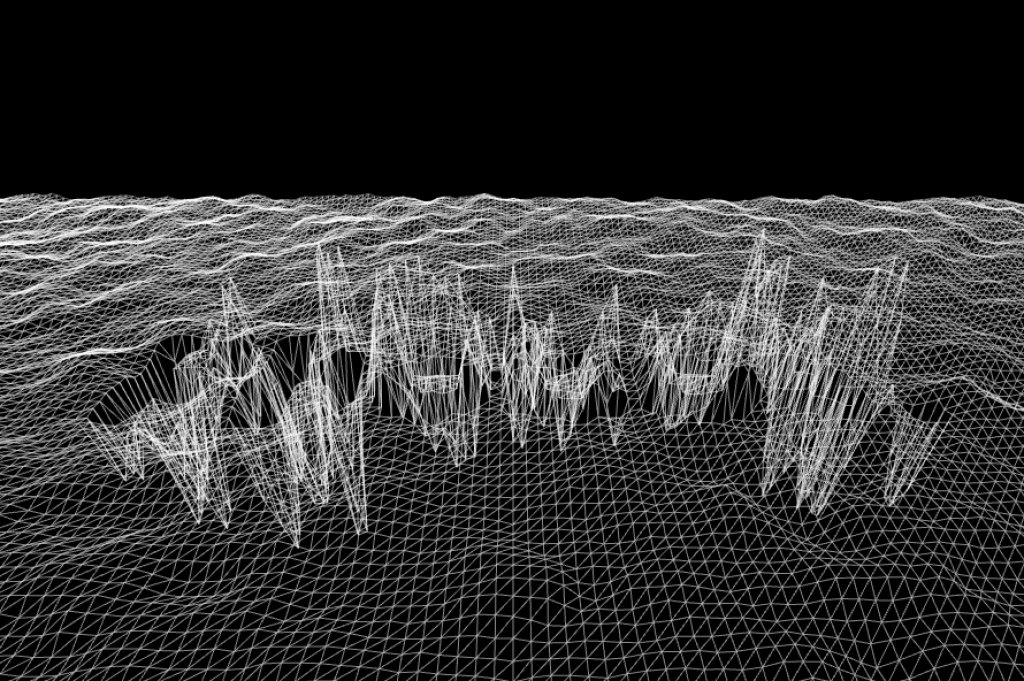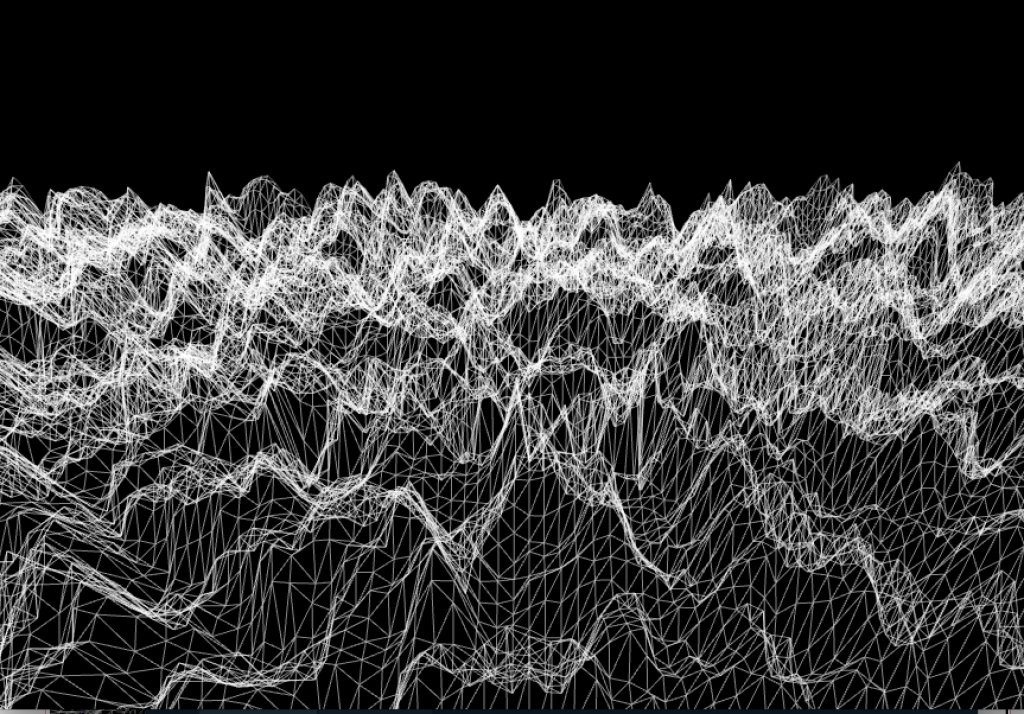In a speculative context, we made a satire about the obsession about sharing our life in social media and the constant need for approval, hidden in egocentric profiles about dreamy lifestyles.
📍 Context
What if Mars’ tourist’s main interest was to be rich and popular online?
This critic has explained through one of the major achievements of the human being: an interplanetary specie, able to travel to Mars, and to create massive tourism whenever they go.
That’s why Phobos is created, a travel agency to Mars with the aim to amass its tourism expanding it to the medium class with a promise: to recover the investment of this trip, if they were the first of each competition.
The participants of this tour would have to share as many as pictures and videos as they can to their timelines, to be able to generate a huge audience, so those followers would help the contestants to gain points with their likes, loves, and live video visits.
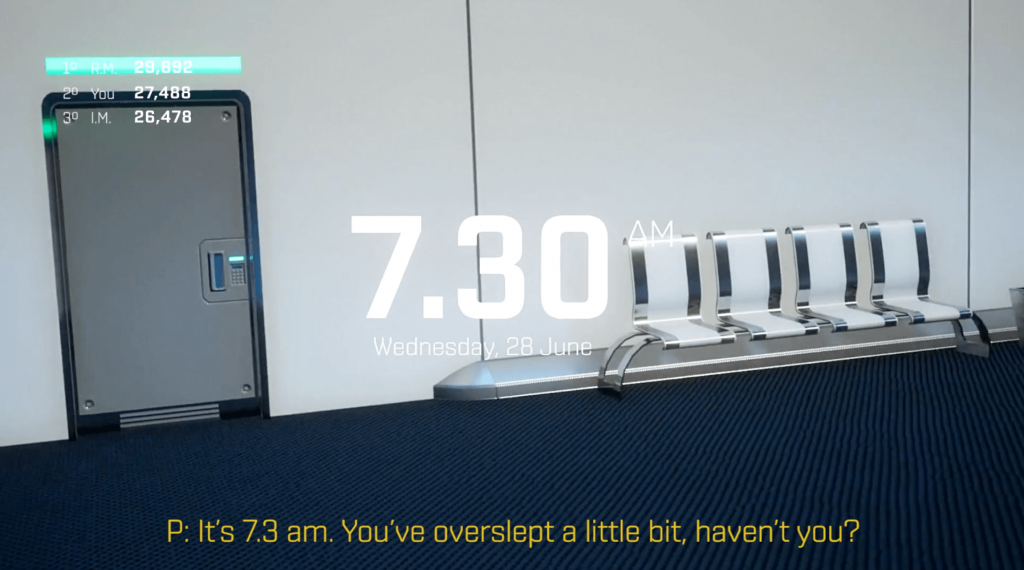
To retrieve their investment, they should win almost 240.000 points, equivalent to the price of the trip in dollars. Once earning the minimum, all the points that are gained would be added to the amount of money that just the first will keep.
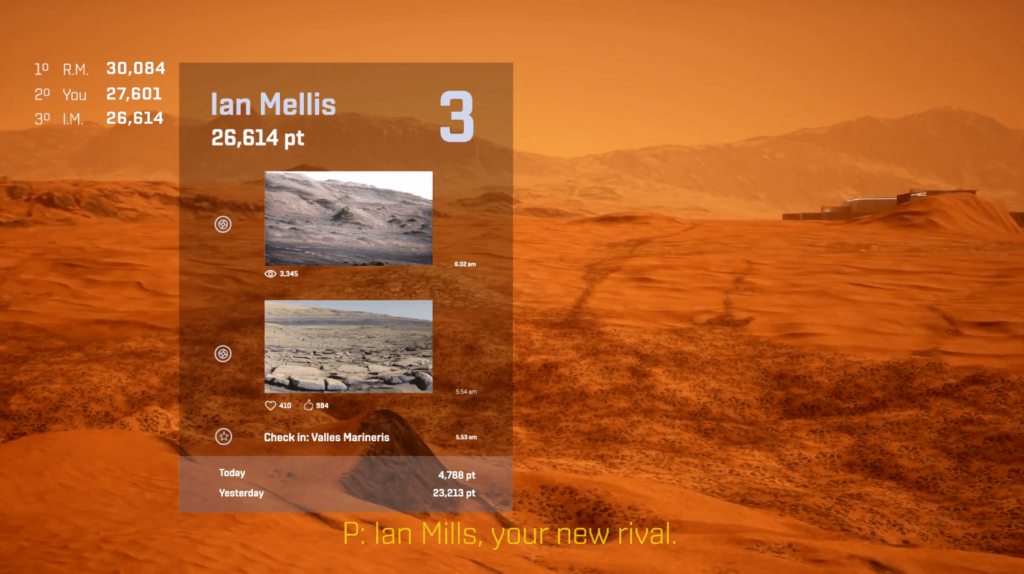
The feedback intensifies the fame of the most popular on Phobos. Only the first three are visible on the website, where viewers can follow their trip and help them to gain points with likes and watching live videos.
If the contestants are not in the podium, their online visibility would be zero, so they’ll have to fight to regain their position.
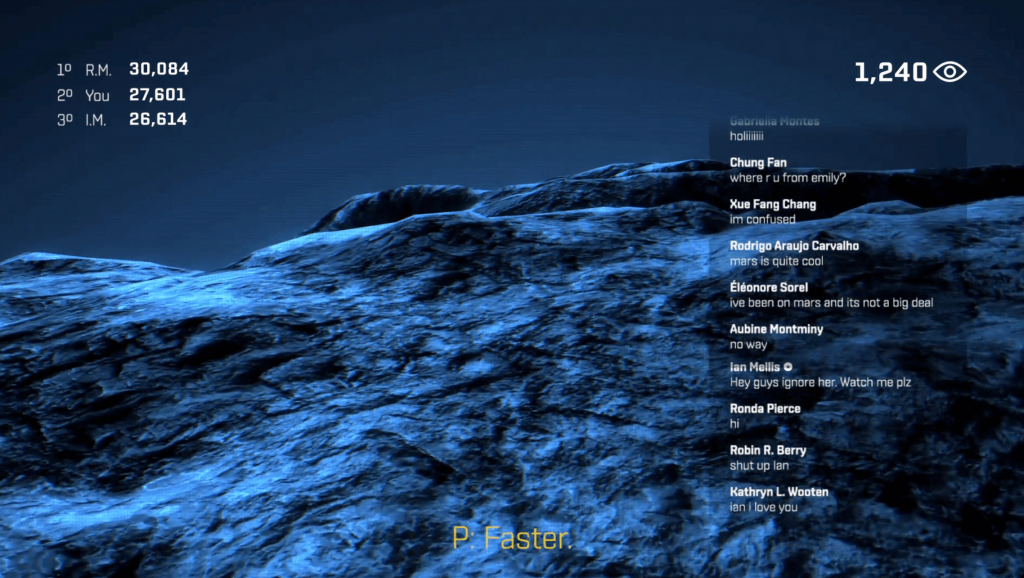
Being this context speculation about the future dehumanised caused by the growing obsession with the use of technology, we believe that if it’s possible going to Mars, it is possible that Mars could become a top-trend destination, seen as an opportunity to grow fast in social networks.
✍️ Sketching the story
When you get the freedom to do anything for your final degree project you feel that you are lucky, but also uncertain about having to decide about a topic. We had a full subject only about thinking about a theme for our project, so we could find something we are really passionate about.
I was into Black Mirror a lot those days, reflecting about society and the future, and somehow my mind map went to topics related to tourism and Make Earth Habitable Again. Even certain politics keep avoiding reality, climate change is a thing and we might never recover the damage we caused.
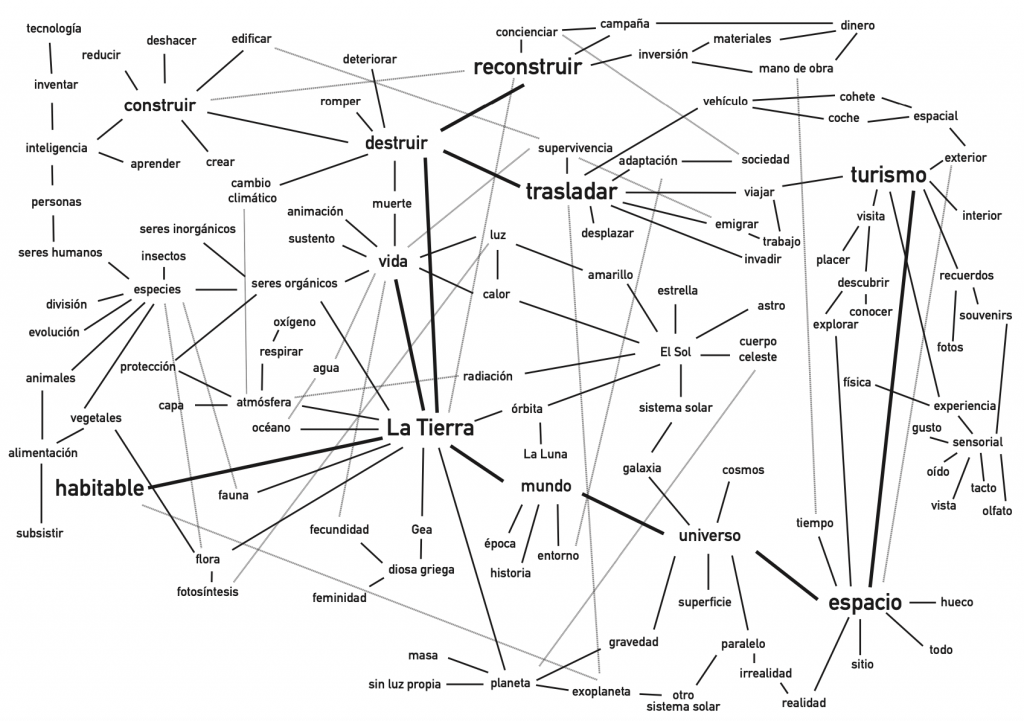
At some random point of the process, I realized that if we can’t fix our Earth, we might find a solution out of it. Then I got immersed in Elon Musk’s theories and projects, and I just got captivated (even I think differently about him in 2020).
Martina, my name, means “daughter of Mars”, and somehow I felt the hype of space exploration and colonization of the red planet (which has always fascinated me) and I decided to dedicate my final degree project to it asking myself: Will Mars’ tourism be mainstream?
Then I started sketching the whole story so it could become a movie to give support to what I really wanted to design, an interface that would be visualised into a headset.
I wanted to develop it as a VR project so the experience was more immersive, but unfortunately, due to time and resources, I wasn’t able to design this project for VR. But it was still a good experience and a lot of practice!
Here are some screenshots of the first wireframe inspired in No Man’s Sky, an exploration real-time strategy survival game developed and published by Hello Games.
👩🏻💻 Coding an interactive logo
Inspired in the MIT Media Lab identity by Pentagram, I wanted a unique logotype, one that would never be the same. That’s why I designed and coded Phobos’s logo using Processing, a Java library that allows you to do art with code.
Here’s a screen record of the logo, which changes while I interact with the keyboard:
This would be a static version of it:
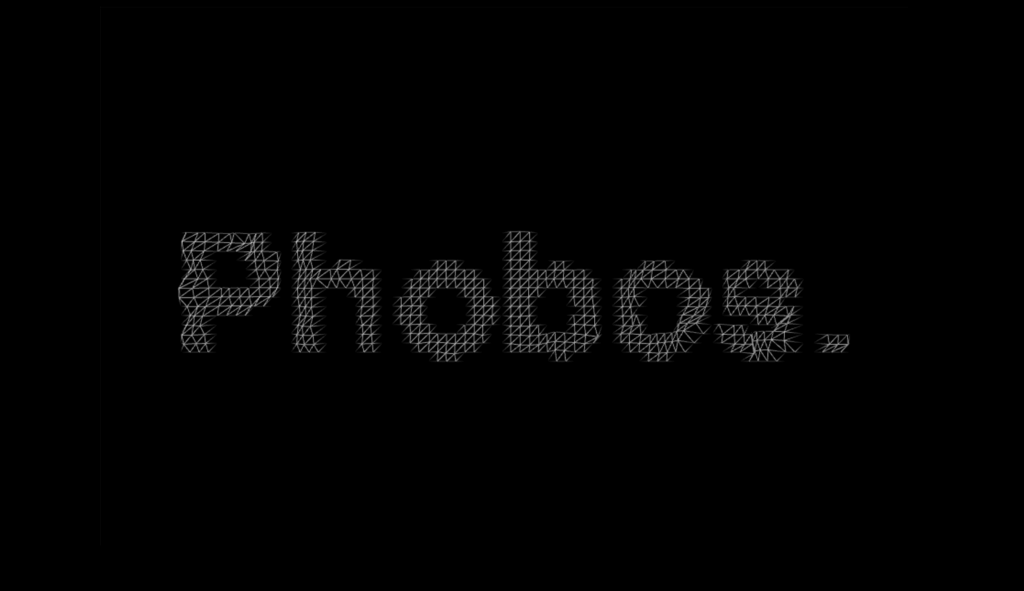
And some more screenshots of the possibilities of this logotype:
💻 Designing and coding the website
As the project is designed in a speculative context where Mars’ tourism is mainstream, I thought about creating a website for it which would make the whole project feel more “real”.
Using Adobe XD, this is how I imagined the landing could look like:

And this is how I ended up coding it so it would help my thesis presentation.
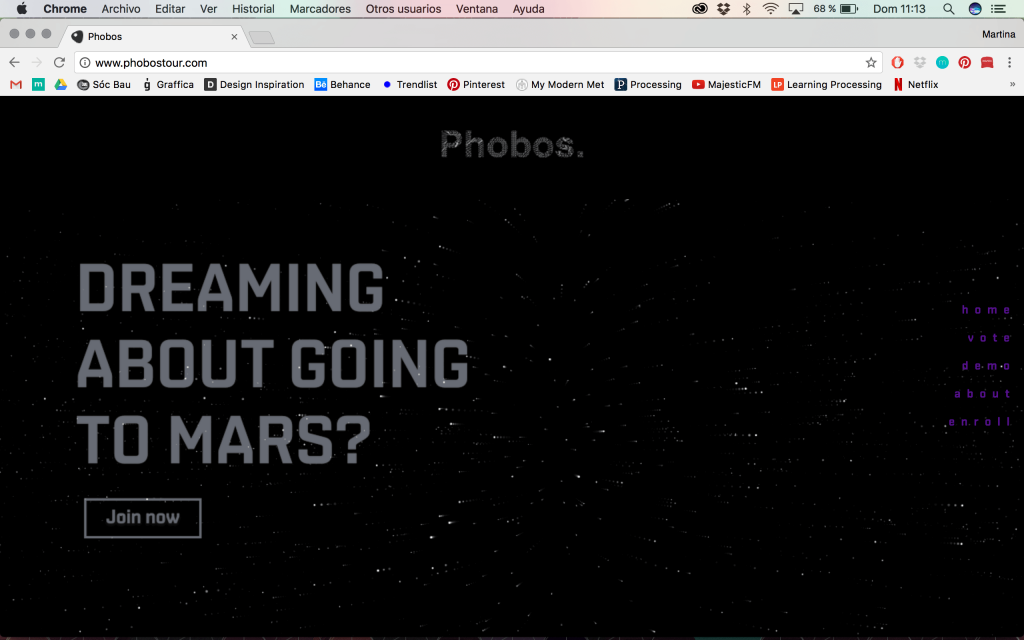

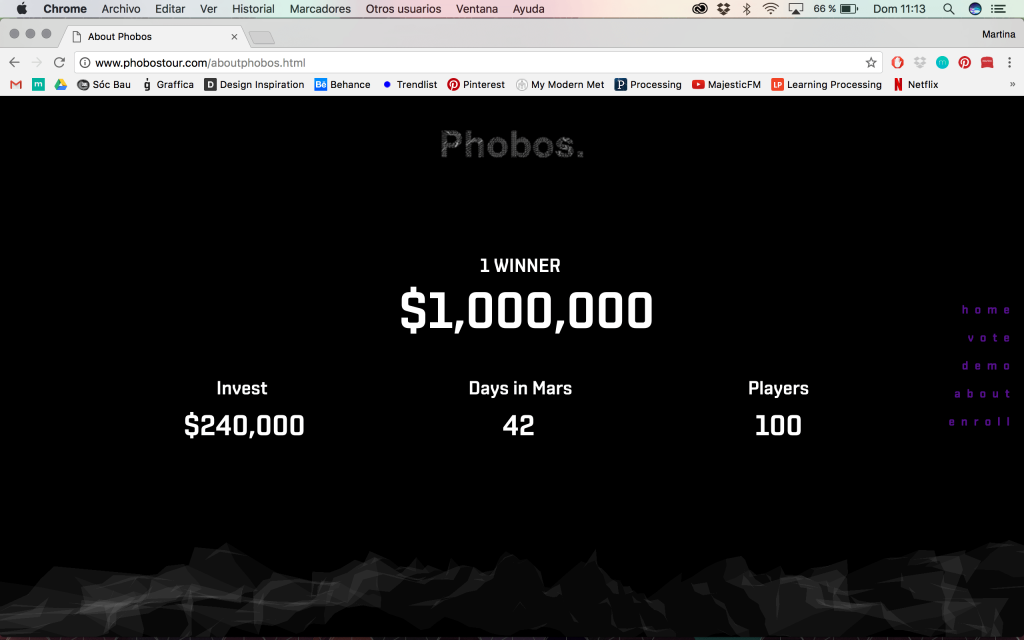


Apart from the interactive logo made with Processing, I added an interactive background for the hero banner of the home that represents stars in the space, and an interactive footer that represents Mars´ terrain.


Fun fact, the website was down 10 min before my presentation of the project because of the custom font I chose, Shentox disappeared and everything was in Times News Roman. Drama 😉
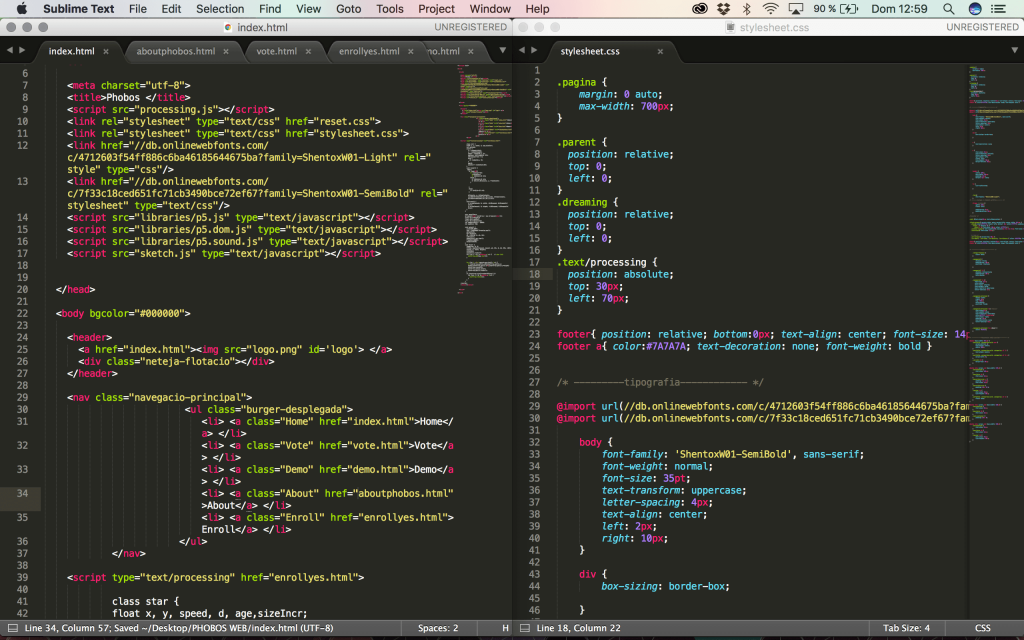
Idea/Art Direction/Programming: Martina Solés Caldés
Scenario Preparation: Xisco Ferrer
Digital Animations: Daniel Ciero
Motion Graphics: Sergi Pulitz
Sound Design: Guille Iranzo
Thanks to Anna Carreras, who helped me with the programming of the interactive logo and motivated me to be more than a graphic designer.
